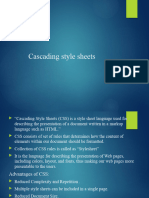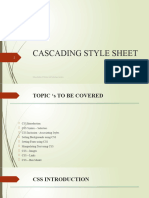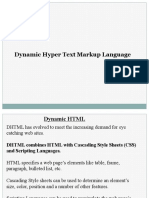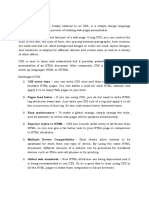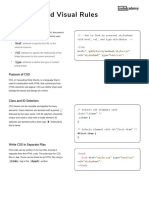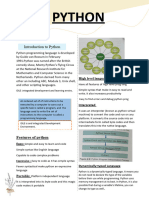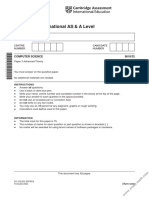0% found this document useful (0 votes)
5 views10 pagesCSS Intro
Cascading Style Sheets (CSS) is a language designed to enhance the presentation of web pages by allowing styles to be applied independently of HTML. CSS offers numerous advantages, including time-saving through reuse, easy maintenance for global changes, and superior styling capabilities compared to HTML. The document explains CSS syntax, selectors, and various types of selectors, providing examples of how to apply styles to HTML elements.
Uploaded by
Gulbir SinghCopyright
© © All Rights Reserved
We take content rights seriously. If you suspect this is your content, claim it here.
Available Formats
Download as DOCX, PDF, TXT or read online on Scribd
0% found this document useful (0 votes)
5 views10 pagesCSS Intro
Cascading Style Sheets (CSS) is a language designed to enhance the presentation of web pages by allowing styles to be applied independently of HTML. CSS offers numerous advantages, including time-saving through reuse, easy maintenance for global changes, and superior styling capabilities compared to HTML. The document explains CSS syntax, selectors, and various types of selectors, providing examples of how to apply styles to HTML elements.
Uploaded by
Gulbir SinghCopyright
© © All Rights Reserved
We take content rights seriously. If you suspect this is your content, claim it here.
Available Formats
Download as DOCX, PDF, TXT or read online on Scribd
/ 10













